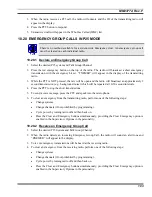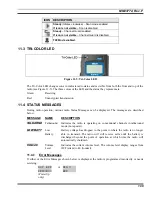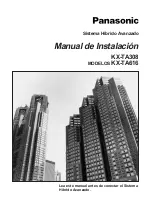
MM23772, Rev. F
110
Where:
xxxx
is the error code and
DSP ERR
or
DIG V ERR
is the message.
11.5 ALERT TONES
The P7200 and P5200 radio provides audible Alert Tones or “beeps” to indicate the various operating
conditions (see Table 11-4).
Table 11-4: Alert Tones
NAME
TONE
DESCRIPTION
Call Originate
1 short mid-pitched
OK to talk after pressing the push-to-talk
button.
Carrier Control
Timer
5 high-pitched/one long low-
pitched
PTT depressed for maximum length of time.
Low Battery
1 low-pitched/one short mid-
pitched
Low battery.
TX Low Battery Alert 1 low-pitched
After PTT - battery too low to transmit.
11.6 TURN ON THE RADIO
1.
Power ON the radio by rotating the Power ON/OFF/Volume knob clockwise. A short alert signal (if
enabled through programming) indicates the radio is ready to use. Refer to Figure 11-1 for location of
the Power ON/OFF/Volume knob.
2.
The display shows the last selected system and group or a default system and group (depending on
programming).
3.
Adjust the POWER ON/OFF/VOLUME knob to the desired volume level.
4.
Select the desired system and group. The display indicates the current system and group names.
5.
The radio is now ready to transmit and receive calls.
11.7 SYSTEM SELECTION
METHOD 1:
From the control knob: If system selection is programmed to the
SYSTEM/GROUP/CHANNEL SELECTION control knob, select a system by turning
the knob to the desired system number position (1-16). The display registers the new
system name on line one. The
button can be programmed to provide access to a
“2
nd
bank” of 16 system number positions (17-32).
METHOD 2:
(P7270, P7250, and P5250 model radios)
From the keypad: If system selection is
programmed as the primary function of
and
,
select a system by pressing
or
to scroll through the system list. The display registers the new system name on
line one
.
METHOD 3:
(P7270 model radios)
Direct Access: Press
to enter the system select mode. Press
the numeric key, which is mapped to the desired system. Press
.
The radio will
move to the selected system.
METHOD 4:
(P7230 model radios)
If programmed, press the
button to scroll through and
change systems. The display registers the new system name on line one.













































